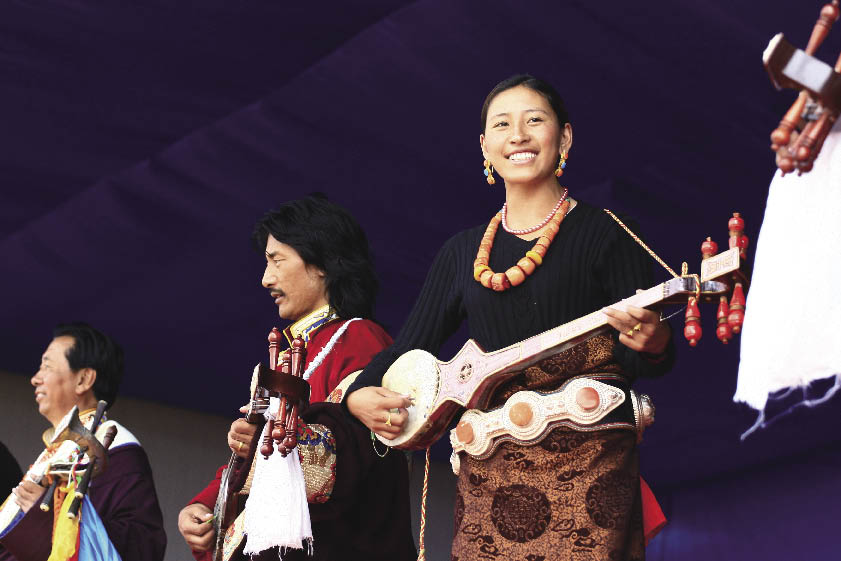|
When Ling was a small tribe, the Moin Kingdom always harassed and looted them. Growing stronger, Gesar decided to bring down the king of Moin. A fierce fight ended with Gesar finally vanquishing the demon.
Throughout the course of his life as a mortal, Gesar succeeded in wiping out every last demon, coming to the aid of the weak and ununified tribes in the region. His sacred mission on earth completed, Gesar returned to heaven together with his mother and wife, bringing to a dramatic close the grand epic of his life.
National Treasure
This important epic is not only popular on the Qinghai-Tibet Plateau, but also in the nomad areas of China's northern Inner Mongolian Grassland.
In recent centuries, many Tibetan scholars came to believe that the protagonist Gesar is either a real person or a synthesis, a character based on a number of real historical figures.
The foundation of the epic is ethnic folk culture. It is believed that before the epic was written, the Tibetan people already had an oral tradition of stories that described the formation of the heaven and the earth, their ancestors, and ethnic heroes. These tales provided a basis for the character of Gesar. After the creation was embellished by balladeers, King Gesar became the great epic that remains to this day.
 |
|
Balladeers from Gannan Tibetan Autonomous Prefecture of Gansu Province are performing King Gesar. |
There are many bards of King Gesar scattered in Tibet, as well as the Tibetan-inhabited areas in other provinces such as Sichuan, Qinghai, Yunnan and Gansu. They perform the duty of remembering and narrating the historical epic, as the oral handing-down once did. As it is deeply rooted in the Tibetan imagination and pervades many aspects of their lives, bards are usually invited to sing the epic at important and formal rituals such as weddings, birthday celebrations and major festival activities. The shorter pieces last for hours and longer verses last for several days. According to their tradition, a complete set of verses must be recited without interruption, in order that the listeners may experience the full power of the transmitted verses. Naturally, a balladeer needs an excellent memory to recite the chapters.
In their traditional manner, the storytellers (normally men but occasionally women) would travel from one celebration to another, retelling the old myths and sometimes interweaving current events into their songs. Epic singers, through repetition of the grand verses, have for generations been imbrued with a deeper understanding of Tibetan history, society, religion and customs than most. Its content yielded countless folktales, ballads and proverbs that, as they are passed down, serve not only as cultural rites but also as an education in Tibetan culture.
Unlike other folk artists, the bards do not pass down their legacy to apprentices or offspring. It is believed that the skill of recitation comes not by study but as inspiration directly from the gods. The balladeers believe the renewal of talent in generation after generation of artists has to do with the reincarnation of a character related to King Gesar. This is in line with the basic tenets of Buddhist reincarnation and the Lamaist Living Buddhas of traditional Tibetan culture.
Performance of the epic is naturally accompanied by some rituals therefore, such as burning incense, powdering roasted barley and worshipping god images or singing in front of a mirror. According to the bards, adherance to ceremony enables them to establish contact with the gods and become empowered to carry out their recitations.
The balladeers always wear hats with all kinds of birds' feathers and carry bronze mirrors as well as musical instruments made of oxhorn. A variety of sound effects and gestures enhance their singing.
| 